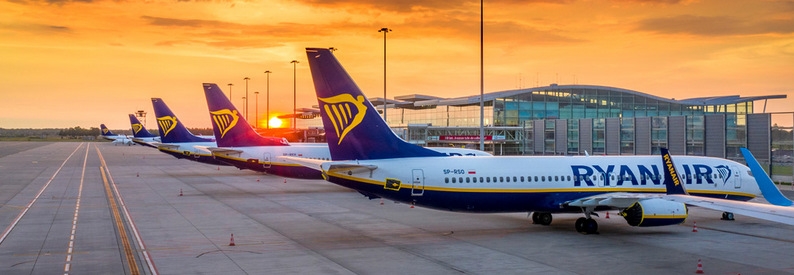Ryanair Prioritizes Frequency Over New Routes

Ryanair is shifting its expansion strategy to focus on increasing flight frequency and improving aircraft utilization, rather than launching new city pairs, as it grapples with ongoing Boeing 737 MAX delivery delays. Speaking on the airline’s full-year earnings call on May 19, Ryanair DAC CEO Eddie Wilson explained that the carrier has become “much more picky about where we allocate capacity,” favoring added frequencies on established routes over the investment required to introduce lower-fare new services.
After a busy 2024 summer in which Ryanair opened five new bases and introduced more than 200 new routes, the airline plans around 160 new routes for summer 2025. However, Wilson said the 2025 schedule will concentrate on markets that offer incentives to airlines—highlighting Italy, Hungary and Sweden—while reducing focus on destinations that have imposed additional travel taxes, such as Denmark. Ryanair closed its two-aircraft base at Billund at the end of March and has cut summer capacity from Denmark by approximately 37 percent compared with 2024, based on OAG Schedules Analyser data.
“We’ve also picked up some extra efficiencies, particularly as we launched the winter schedule this year,” Wilson noted. By flying fewer flights on lower-demand days such as Tuesdays and Wednesdays and shifting capacity toward Thursdays, Ryanair has optimized aircraft use without relying on new route launches. This “judicious” approach to capacity allocation aims to protect margins and reduce the risk associated with subsidizing new routes through aggressive fare promotions.
Despite delivery delays for the remaining 29 aircraft from its order of 210 Boeing 737 MAX 8s, Ryanair achieved a record 200.2 million passengers in its fiscal year to March 31, 2025. The airline expects to grow passenger numbers by 3 percent, to 206 million, in the year to March 31, 2026. Forward bookings for summer 2025 are ahead of last year, and Ryanair anticipates fares for the first quarter of the current financial year to finish a mid-to-high-teen percentage above levels from the previous year. Michael O’Leary, Ryanair Group CEO, said second-quarter pricing looks set to rise by 4 to 5 percent, partially recovering from a 7 percent decline in Q2 2024.
The decision to slow the pace of new market entry follows a recognition that sustaining profitability on thinner regional routes can prove challenging, especially when rising operational costs and fuel price volatility weigh on results. By reinforcing its busiest routes with more frequent sailings, Ryanair seeks to bolster load factors, simplify scheduling, and leverage its extensive European base network to maintain competitive advantage once MAX deliveries resume.
Wilson emphasized that nearly all additional aircraft slated for summer 2026 have already been assigned to bases, with only a small handful waiting deployment decisions. Ryanair’s willingness to redeploy capacity to underserved days of the week and its more cautious approach to launching routes reflect a broader industry trend toward maximizing yield on core network flying before expanding geographic reach.
Travel analysts believe Ryanair’s pivot could prove prudent in an environment where many low-cost carriers face pressure to sustain margins amid inflation and geopolitical uncertainty. By concentrating on frequency growth in incentive-friendly markets and enhancing aircraft productivity, Ryanair aims to maintain its market-leading position in European short-haul travel, laying the groundwork for long-term growth once its full fleet of 737 MAX aircraft is in service.
Related News : https://airguide.info/?s=Ryanair
